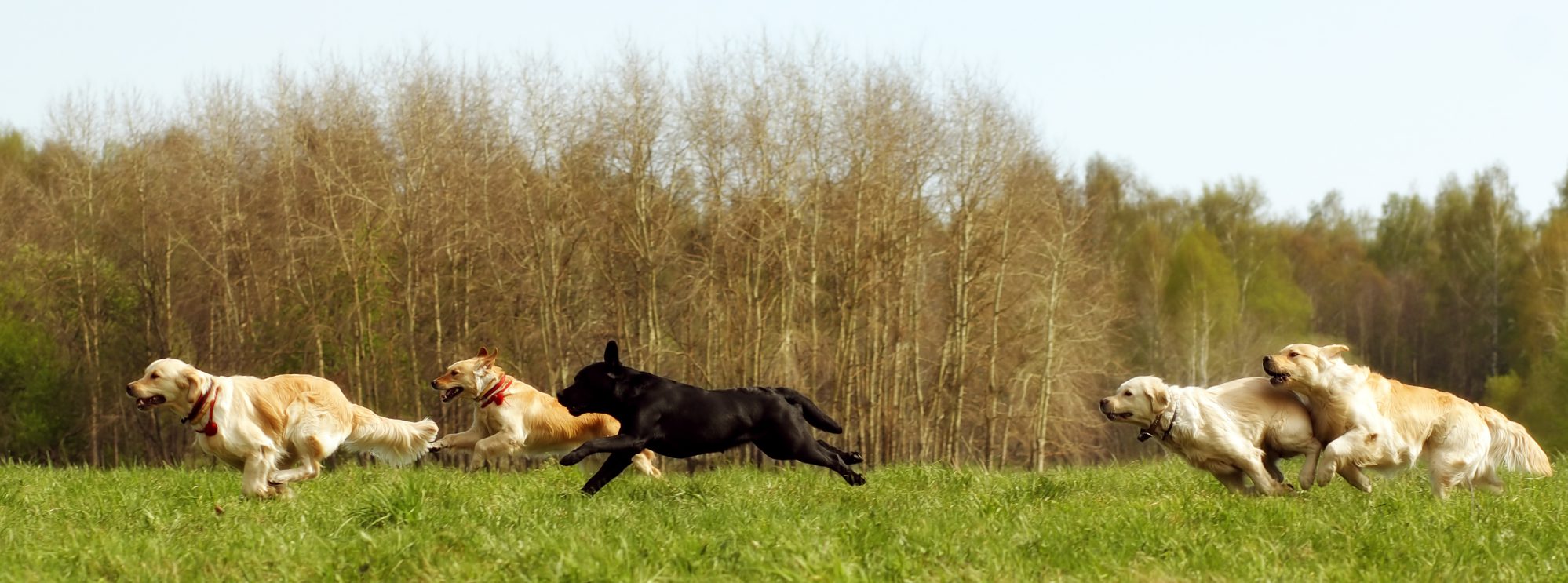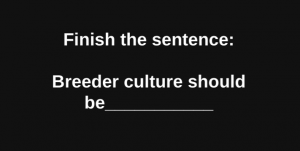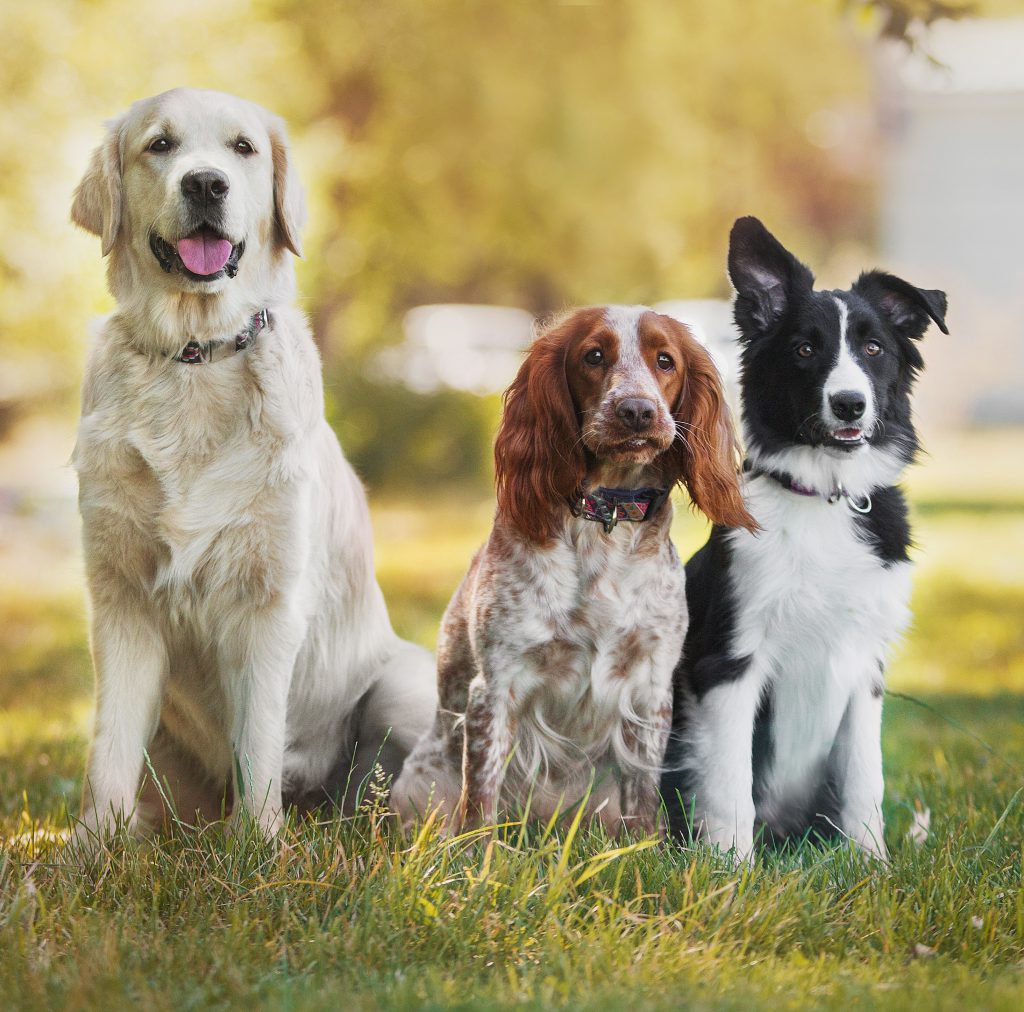
Breeder Culture: On Genetic Outliers

Recently on Facebook I asked “Fill in the blank. Breeder culture should be________”. Here were some of the responses: “Supportive.” “Transparent.” “Open.” “More welcoming, modern, and less demonized.” “All about the team!” “Focused on common ground instead of differences.” “Cooperative rather than competitive.”
This collection of comments is inspiring and brings to mind the concept of the “Big Kennel.” The Big Kennel is a concept I’ve long heard about from a few Standard Poodle breeders and inherently makes sense: the collection of dogs existing in the breeding population are contributing to the future. It came from an early informal effort by Standard Poodle breeders to replicate as a cooperative group what was once possible in the large kennels that once were common in the early part of the 20th century. Very wealthy families might have a large kennel with many employees, many dogs, and many litters. With enough foundation stock, these big kennels could maintain far more genetic diversity, keep good health records, try many different combinations of sires and dams and have all the dogs well cared for and healthy. Today, this is essentially unheard of, and hobby breeders only have a few dogs each who usually live with us like family. If we want to maintain the overall genetic diversity in our breeds, properly track health status, and preserve our breeds, we must work as a network of knowledgeable breeders: like a big kennel.
The Big Kennel working together, rather than against itself, is better for dogs and breeders; individuals can contribute to a positive and supportive environment, which is open and honest about health, and comprised by those with integrity. Being part of the “team” contributing to a breed’s future, regardless of individual program goals is a beautiful concept, one conservation breeders readily adopt when available. Of course, some amount of competition among breeders is also good, because we all like to win, and competition drives programs forward. However, the Big Kennel concept requires good sportsmanship; happiness for other individual’s success should be natural, for their success one day may help our own programs and breed move forward.
Like many people, I am on social media. At times it can be encouraging, while others discouraging. People make assumptions about what “diversity” means, how breeding for diversity works, or what those of us here at BetterBred believe people should do with their data. An often repeated misconception among breeders is that we believe diversity should be used with exclusion to traditional tools we have had, like selecting for conformation and proving one’s dogs in a ring, or health testing, temperament, drive, pedigree, etc – even that we are fundamentally against linebreeding (click here to see how our software can be used to aid in linebreeding).

One recent comment I read went something like this: “Outliers are there, but once they are used enough they will no longer be outliers and we will be in the same position.”
This comment speaks to a fundamental misunderstanding of the value of an outlier and to mentalities that are not useful for our breed communities, or the Big Kennel they should be. It implies that outliers will easily become popular sires (this would not be easy to accomplish), that outliers in and of themselves are what’s desired, and some element of unconstructive competition (“My outlier is better than your dog because it’s more different,” or “Your dog isn’t as special as mine.”)
The fact is that genetic outliers are not in and of themselves magical silver bullets that will never experience any health issues. This idea is foolhardy, since all animals carry genetic mutations and some will exhibit them with time. What outlier dogs represent are genetics that are atypical for the breed. Remember that dogs have over 19,000 genes, and a relative few control appearance and temperament. We can have lots of consistency in the genes that control appearance or temperament, or some other factor, like stamina, while having plenty of healthy variation in the genes we don’t see. Being a genetic outlier doesn’t mean a dog won’t LOOK like they should, or have anything bad about them, but it does mean that their genetics are infrequent in the tested population.
What does that mean? The population this comment was in reference to was Standard Poodles. The Standard Poodle breed has a lot of available genetic diversity, but the vast majority of dogs carry the most frequent, or typical, genetic variants, while very few carry the least frequent, or atypical, genetics. Most other breeds don’t have as dramatic a difference between how common the typical genetics are and how uncommon the atypical genetics are.
For example, to date, UC Davis has found an average of 9.85 genetic variants/alleles at all of the locations they test in this population. However, only 3.66 of those genetic variants are carried by the majority and are effectively contributing to the population. This means that breed has a bottleneck, and bottlenecked breeds tend to have poorer health than those that do not have this obvious a gap between the “effective alleles” per locus and the average alleles per locus.
So, returning to the statement above – outliers are valuable because they have some of these less common variants to share with the rest of the population. If they are used more, and then their overall genetics will become more common, and the genes breed wide will distributed more evenly, which can slowly mitigate the effects of a genetic bottleneck. The breed average effective alleles will then rise and we will see changes in other metrics we use to track the breed’s diversity. This then also means the health of the breed can improve, especially if many breeders work together, by both selecting for good health and breed type, as well as genetic diversity. This way they still select for the genes that control appearance, but also keep the other genes healthy. They do this in many ways – diversity testing puppies and considering those results as well as conformation, allowing others use of their different lines, etc. This is the Big Kennel way of thinking, because every breeding choice we make, every puppy we run on contributes to our breed. Yes, by following this method, a quality genetic outlier will become less of an outlier, but the breed will then benefit from the influx and redistribution of different genetics, so all dogs are less susceptible to the complex breed specific diseases that have often become far too common in our breeds.
Being part of the “team” contributing to a breed’s future, regardless of individual program goals, is a beautiful concept, one conservation breeders readily adopt.
And, for this to work properly, the onus is still on breeders to select for type, temperament, drive, and the purpose of the breed, just as we have always done. Diversity does not do well alone without selection. Remember that the canine genome is huge, but that the genes that control conformation are relatively few, so it’s perfectly possible to have all the right genes in the areas that control appearance and temperament and plenty of diversity in the rest of the DNA. We at BetterBred see this, daily, as we work with very many different breeds, each with a unique genetic situation for their breeding population. Many have gorgeous and typey dogs, AND good distribution of their genetic diversity. They also tend to have better breed health.
Sometimes we find people think of their outliers as more valuable, or something to use as a way to advertise for their individual kennels. It’s certainly a good thing to celebrate, however, we don’t ever want it seen as a mere marketing gimmick, and should be cautious not to create an “us versus them” mentality. This is about your breed as a whole. If a significant outlier should be found, one that’s a good representation of that breed, this is exciting for the breed.
So, the misconception of what an outlier means, as well as adverse breeder culture, can get in the way of moving forward in a positive manner to improve breed health and redistribute existing diversity. Breeds without bottlenecks also need to maintain their good distribution through careful breeding so in the same way, a positive and supportive environment is desirable.
I think we can all agree that keeping an eye to our own breed’s Big Kennel is a positive way to move forward with our idyllic breeds. This is breed conservation, and the mentality we try to foster here at BetterBred.
 Previous Post
Previous Post Next Post
Next Post


